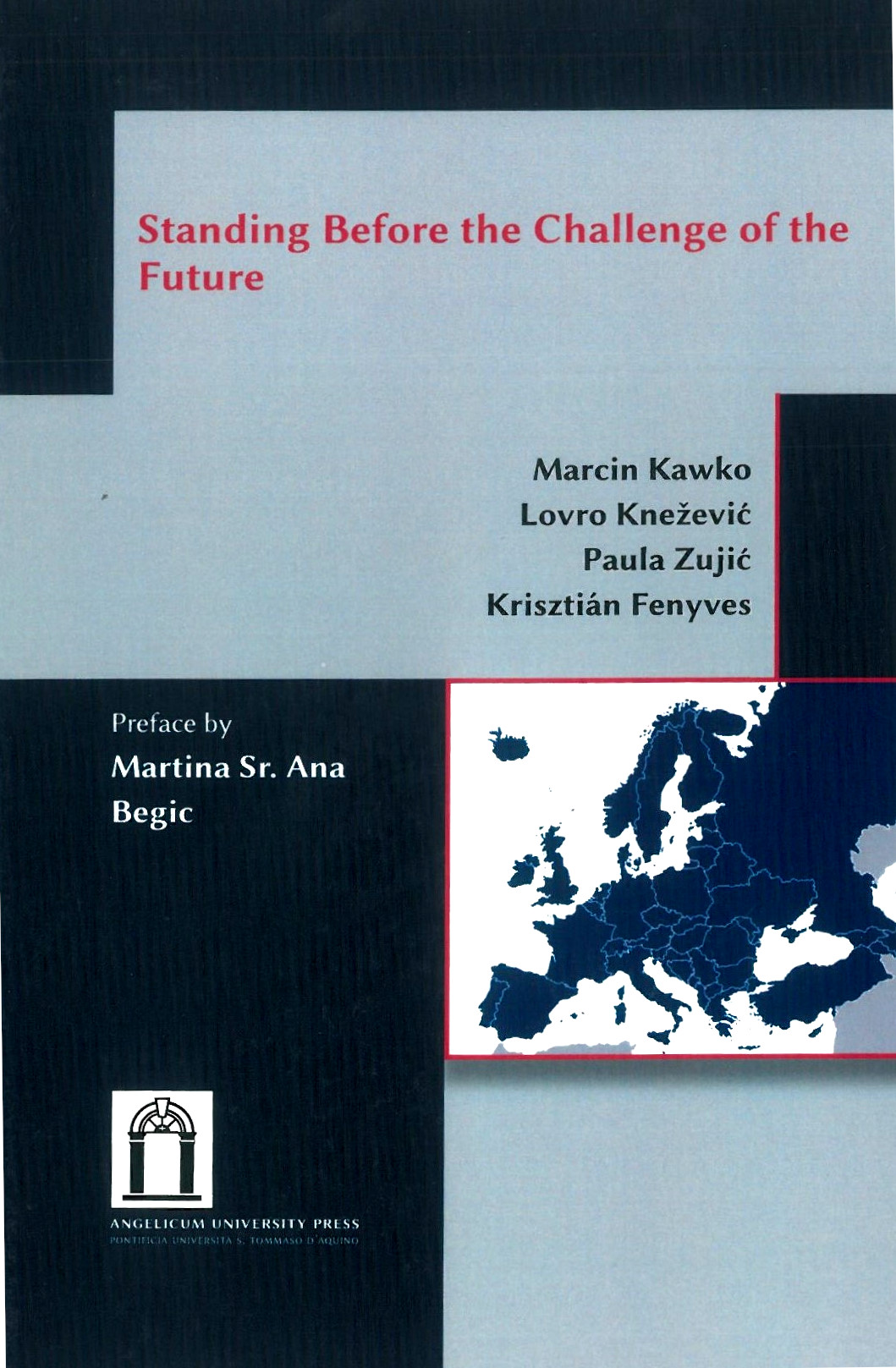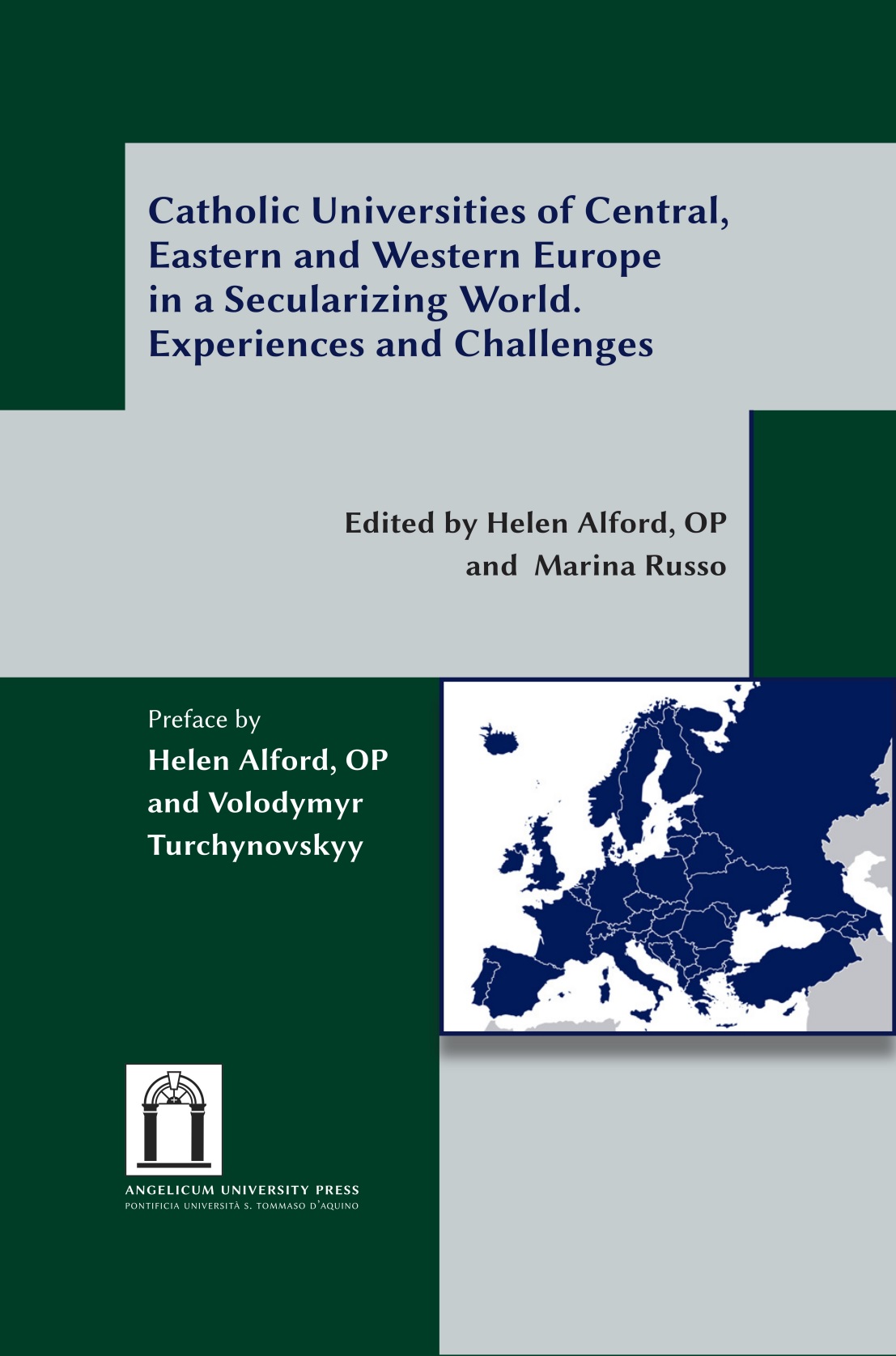Rationality in economics
 Between 1870 and 1935 economists developed a set of concepts and theories which are today known today as “neoclassical”, and which have become the dominant paradigm in economics. This theory, like many other theories in the social sciences, is based on the anthropology of the homo economicus, the utility maximizing, egotistic and, in terms of preferences, independent individual. On its grounds a clearcut theoretical construct is built, which becomes accessible to formal modeling.
Between 1870 and 1935 economists developed a set of concepts and theories which are today known today as “neoclassical”, and which have become the dominant paradigm in economics. This theory, like many other theories in the social sciences, is based on the anthropology of the homo economicus, the utility maximizing, egotistic and, in terms of preferences, independent individual. On its grounds a clearcut theoretical construct is built, which becomes accessible to formal modeling.
Distinguished economists like Gary S. Becker (1976) and Milton Friedman (1953), who work in the neoclassical tradition, apply the homo economicus concept as a universal approach. This group of economists sees economics as a positive science that helps policy makers to choose the means to accomplish their political ends, although economic research does not bear the choice of ends in itself (Hausman 2003).
Rationality in the social sciences
The standard economics approach, also denoted as “rational choice” theory, has been exerting an increasing influence within social sciences and humanities research since the 1970s. For example, in political science, rational choice models serve to explain behaviour from the level of groups through that of institutions, up to the level of states; and rational choice scientists claim to give sufficient explanations of collective, institutional, and state action (Axelrod 1998, Munro 2004: 19).
Within sociology, ethnology and psychology rational choice has also become the predominant paradigm of empirical research. Culture, religion, and arts are explained on the grounds of individual utility maximisation (Munro 2004).
The concept of homo economicus can be applied (a) as accentuating a particular dimension of man, as appears in the economic sphere or (b) as a universal representative of all human behaviour (Manstetten 2005: 64).
At present many scientists both within and outside economics find the universal application of rational choice models to real economic and social processes to be problematic (Blaug 2001, Hausman 2003, Sen 2002). They refer mainly to the inability of rational choice models to describe real problems sufficiently, such as the ecological problem or allocation problems, both on the basis of its assumptions and regarding the possibility of implementation of the resulting political measures (Blaug 2001, Sen 2002). Gueth and Kliemt (2004: 8) claim that if the notion of homo economicus is not “confined to very narrow domains like special competitive markets in which it applies, it must be rendered void of most of its empirical content by auxiliary assumptions that are often ad hoc”.
Outcomes in experimental research in psychology and experimental economics, and thus from within economics itself, have detected shortcomings in rational choice assumptions when human action is to be captured comprehensively (Field 2003). They indicate that explanations of human behaviour based on rationality and optimisation, except for the most simple of cases, must be rejected (Kagel/Roth 1995). Phenomena like normative (altruistic) and expressive (artistic, ethnic, cultural) motivations, cannot be explained satisfactorily with the concept of the homo economicus and are consequently often excluded from, or inadequately depicted, in analyses.
Gueth and Kliemt (2004) claim that, in reality, human behaviour appears to be guided by principles other than rationality and selfishness and can therefore be considered to be “boundedly rational” (ibid).1
According to Reinhard Selten (1990: 51) cognitive and motivational limitations can be identified as the sources of bounded rationality. In experiments, evidence for motivational limitations due to a separation between cognition and decision has been found. The term “motivational limitations” refers to a problem known as “acrasia” in philosophy (ibid): A person may know very well what action is best for them, and yet they might find themselves unable to choose it (ibid.). Cognitive limitations go back to the individual’s ability to process information and to combine the data with the knowledge required to identify the optimal decision.
However, there is a major difference between these limitations. Whereas cognitive limitations are compatible with the assumption that individuals maximize their utility, and hence want to rationalize, this cannot be claimed in the case of motivational limitations.
Various scientists in economics (Selten, Witt), sociology (Habermas, Dewey) and philosophy (Adorno/Horkheimer, Lyotard) have identified rationality as the main problem in the study of human action and have intended to contribute to the advancement of the notion of rationality and action theory.
Multi-dimensional rationality
In his “Theory of Communicative Action” (hereafter TCA, vol. 1, 1984; vol. 2, 1987; in German 1981) Habermas develops a multi-dimensional concept of rationality. He defines three forms of rationality: formal rationality (means-end rationality: Zweckrationalitaet), normative rationality (value rationality) and expressive rationality. Objectifying action, which refers to the objective and social world, requires formal rationality (science, technology); norm compliant action, which refers to the social and subjective world, requires moral-practical rationality (law, morals); dramaturgic-expressive action, which refers to the subjective and objective world, requires aesthetic-practical rationality (eroticism, arts).
The different types of rationality, which refer to specific areas, are integrated through the notion of communicative rationality. Communicative rationality aims for dialogical understanding, the latter being established by rational accordance. Accordance is determined by criticisable claims of validity of propositional verity (verity of the statement), of normative correctness (reference to normative contexts) and of subjective veracity (veracity in reference to the intention of the speaker).
Communicative rationality naturally eludes cultural, historical and systemic limitations and hence is capable of claiming a moment of unconditionality (Habermas 1981: 27), which is innate to philosophical reflection (De Angelis 1999: 7). This moment of rationale of the universal reason, becomes tangible through the possibility to separate questions of the validity of meanings and notions (including moral norms, scientific statements, etc.) from their respective social, historical and aesthetical context (ibid.).
Life world and rationality
The notion of communicative rationality allows for a complementary perspective, which Habermas raises with the notion of the life world (hereafter: Lebenswelt). The term Lebenswelt comprises the intersubjectively produced normative structures within a society (Habermas 1981: 107ff). Habermas differentiates between the material basis of the Lebenswelt (that is the given natural environment and the man-made environment) and the symbolic elements of the Lebenswelt, which are preserved and bequeathed through the participation of the individuals in the communicative practice of everyday life. The symbolic elements are (Baechthold 1999: o. S.):
1. Culture, as the societal pool of knowledge about interpretation patterns, which form the symbolic foundation of mutual understanding.2
2. Society, in the sense of tangible social relations, solidarities and the integration of the individual.
3. Personality, as the result of communicative competence, acquired by socialization.3
Lebenswelt encompasses cultural knowledge and the space of social interaction (see Baechthold 1999). Although Habermas does not expatiate on this background hypothesis, he certainly assumes that an innate rationality inheres in the Lebenswelt.4 This rationality may be denoted as “cultural rationality”, that is, the rationality of culturally conveyed conventions.5 The notion of cultural rationality could then be understood as the common tradition, which encompasses all forms of behaviour that are deemed proper and appropriate and which, in this sense, can be seen as intersubjectively reasonable and hence rational, since it provides forms of behaviour, which allow for community.
Cultural rationality denotes the symbolic order within a cultural community, the structure of meaning and (personal) identity, which influences action, beyond the individual’s rationality and the level of individual ends, in the sense that it provides publicly available forms that are used to make experiences and to express oneself (Swidler 1986: 273).
Terms such as the “ethos” of Aristotle and the “habitude” of Pierre Bourdieu express the nature of cultural rationality, by referring to societally-imparted and conveyed dispositions of action (conventions, habits, custom): “[Culture] is more like a … repertoire from which actors select differing pieces for constructing lines of action.” (Hannerz 1969: 186-88, taken from Swidler 1986: 277). Culture in this sense, has its own rationality, which is realized through the connection of action with general concepts of life intelligible to all. The anthropologist Clifford Geertz, for instance, alludes to the “informal logic of real life” (1987: 25). Culture does not primarily refer to ethical principles, but to forms through which these principles are realised. By providing a set of patterns of behaviour, as a frame of human action which humans do not necessarily choose rationally, culture exerts a power which facilitates the establishment of social cohesion and order. This type of rationality, I argue, is paradigmatically condensed through rituals.
The ritual: definition and application
The notion of ritual in the social sciences first comes into focus in anthropological research on so-called primitive cultures from the beginning of the 20th century until the 1970s.6 It is not before the late 1960s that the research of rituality in modern societies comes into focus in sociology.7
Rituals in a general sense can be described as symbolic and formalized routines (see Soeffner 1992: 117). A ritual is a course of action, which follows given rules and is therefore, to a large extent, independent from spatial or temporal conditions, and appears repeatable (Glei/Natzel 1992: 1054f). Axel Michaels (1999: 30-39) characterizes rituals with the following five aspects:
1.Motive
2.Formal resolution
3.Formal criteria
4.Modal criteria
5.Change of status
1. The motives to perform a ritual can be of temporal, spatial or biological nature or can be related to the life-cycle.8 Examples for occasions are: inauguration, exam. Examples within the life-cycle are: birth, initiation, marriage, death; biological: sickness, and so on.
2. For their performance rituals require a formal resolution. A spontaneous, haphazard and coincidental celebration of an event is not a ritual. The formal resolution does not necessarily require a verbal expression and is not identical with “meaning“. The formal resolution can occur non-verbally, according to a date for instance. To take off one’s shoes does not have to be part of a ritual. It becomes such an action, however, when one enters a mosque. A ritual must fulfil two necessary formal criteria: It has to be:
a) formal, stereotypical, and repetitive and hence imitable and
b) irreversible.
This of course means that rituals are neither spontaneous nor reversible.9 Rituals are often limited to a certain group, e.g. to a religious group, to a political association, etc.
Rituals have two modal attributes: societas and religio. Societas refers to the elements of community of a ritual, which are generated through participation. Religio refers to the transcendental elements of a ritual. A ritual refers to superior reality or order. Rituals are related to changes. Herein it differs from other preservative actions, routines, games, sports, custom, and tradition. By means of the ritual a perceptible change takes place: a new social status with societal consequences, or a new competence, which had not existed before. Ritualized changes do often mark changes between old-new, pure-impure, alive-dead, life-afterlife holy-profane etc. (see Michaels 1999: 38).
Concepts of ritual in anthropology and sociology
In sociology we find two opposed concepts of ritual10: 1) the functional-instrumental, after which ritual action is a social technique (Goffmann 1967) and 2) the concept of ritual as a non-functional action, which is an end in itself. According to the functional concept, mainly developed in symbolic interactionism, rituals are tied to individual ends. The ritual is performed in order to achieve something or to generate something. Thus the ritual remains within the logic of individual ends and means and can hence be understood as rational.11 According to the non-functional concept, which for example is argued von Frits Staal (1979, 1989) as well as Caroline Humphrey and James Laidlaw (1994), rituals are pure activities without any external function, end or aim (Staal 1979: 131). The ritual is a transcendent mode of human being, a construction of timelessness, rather than an attempt to stem change. Through rituals one touches immortality and separates oneself from profanity and everyday life (Michaels 1999: 44, Gehlen 1950). I find one of the most fruitful perspectives on ritual to be that of Émile Durkheim in “Elementary Forms of the Religious Life” (1912), where performing a ritual is seen as the actualization of community: ‘‘Not only are they [rituals] individually accepted by all members of that group, but they also belong to the group and unify it’’ (Durkheim [1912]1995: 41). And with Jeffrey Alexander’s words, the interpretation of the latter would be:
“Ritual effectiveness energizes the participants and attaches them to each other, increases their identification with the symbolic objects of communication, and intensifies the connection of the participants and the symbolic objects with the observing audience, the relevant ‘‘community’’ at large.” (Alexander 2004: 527).
Rituals in corporate life
Following the description of rituals by Axel Michaels (1999), rituals exist in all contexts of human life, including the economic sphere. This thesis is not obvious at first glance, since it is particularly economic action that is often considered as means-end-rational and utility maximising. The economy is taken as a sphere where action without an end and non-utility maximising processes do not take place. Thus the economy is – in the sense of Max Weber – “a shell as hard as steel” (1920: RI203), which imposes the logic of economic action on the individual. But a look into management literature reveals that social institutions and symbolisms, e.g. in the form of rituals are particularly important in change and creative processes.
The topic rituality came into focus in management science in the mid-70s, especially amongst American scholars (Boone 2001, Deal/Kennedy 2000, Martin 1992, Cleverley 1973). For the implementation of corporate culture and in order to provide values which guide the employee’s actions, rituals and ceremonies are often considered indispensable: “Without expressive event, any culture will die. In the absence of ceremony or ritual, important values have no impact. Ceremonies are to the culture, what the movies are to the script, the concert is to the score, … values that are difficult to express in any other way.” (Deal/Kennedy 2000: 63). Management and leadership science therefore focuses strongly on the ritual as an instrument and especially develops concepts of ritual management (Beyeler 2003, Deal/Kennedy 2003).
Rituals are seen as spheres of managerial influence against the background of the idea of a cohesive corporate culture. Particular importance inheres in rituals for management purposes in so called change processes and in change management. Change processes deal with crucial modifications within the company which are not initiated by an external shock or the like, but arise within the company or are generated by the management. Examples are modifications within the product line, reduction of staff, reorganisation of operating processes and competences, and other forms of modification. In organisational theory the phenomena of ritualized action cannot only be analysed through an instrumental-functional perspective; rituals have to been viewed as systems of symbols and interpretation. Corporations then are not primarily seen as economic units, but as a special forms of social organisation. This perspective is fairly different from the perspective of classical management theory.
I argue that the persistence of traditional behaviour has its foundations in the dependency of the rational on forms of the traditional, e.g. ritualized behaviour.
My thesis is based on two arguments. 1) Firstly, I argue that rituals reduce complexity and tension within a social unit such as a company. 2) Secondly, I argue that rituals actualise collectivity and therefore are crucial for corporate bonding and any long-term coordination within a social entity. They may also be helpful to overcome cross-cultural differences within multinational corporations.
Rituals reduce complexity and tension and actualise the collective
Rituals help to reduce the complexity of impressions to their essential elements. Through rituals the course of events becomes clearer, and appears more controllable. For example, if the promotion of an employee is introduced by a promotion ritual, a celebration to which all relevant people are invited, the new role and competence becomes manifest and confirmed for the promoted person as well as the other staff. Through a promotion ritual, which can be denoted as a rite of passage since it leads from one status to the other, changes become certain, official and – this being very important – related to the company’s culture and corporate values. This kind of ritual also helps to prevent conflicts among the staff and may also serve to strengthen solidarity among them. The same effect can be observed when a new product or product line is inaugurated or a new project is started by a kick-off ritual (Deal/Kennedy 2000).
Rituals provide rules and structures and take place according to a certain pattern. Hence, they limit the choice of possible uction of complexity is both a relief and, at the same time, provides security.
Through rituals human beings deal with social differences and create the feeling of belonging. Through collective action, rituals provide a frame for personal encounter, communication and interaction. Rituals put across emotional security and social reliability. Particularly in times of economic, political, or social change, they play a crucial role in building communities. I find the effect of corporate rituals well illustrated in the following report. It was provided to me by a German executive manager who is working with a multinational corporation in Singapore, and who had just recently been sent to China for a customer project on-site. The following quotation is from the diary he wrote during his stay.
“In the middle of the afternoon, a large cake is bought in: The official birthday party for everybody who had their birthday in January and February. Candles are lit, everybody sings “Happy Birthday” in Chinese (that song seems to have conquered the globe), pictures are taken and the cake is cut and distributed. While everybody is eating their cake, a major rearrangement of furniture seems to have been decided: The 40 desks are moved from rigid rows into a more circular arrangement, with everybody now facing each other. I assume, some project team spirit has manifested itself…”
Rituals, moral development and the Good Company
In their “Theories of Moral development” Rich and DeVitis state the following: “Moral development refers to growth of the individual’s ability to distinguish right from wrong, to develop a system of ethical values, and to learn to act morally” (1985: 7, emphasis in the original, taken from Reich 1990: 122). Reich (1990: 123) emphasizes the crucial role affect may have in the moral development. According to Weinreich-Haste (1986, 1990) rituals are affect-laden and hence, in principle, can activate moral change.12 In addition Weinreich-Haste identifies three elements, which are related to ritual practice and which may influence moral development: 1) creative analysing capability, 2) the conviction that moral action is possible, and, 3) a personal commitment. A creative analysing capability, or in other words, the imagination of a moral environment, is not possessed abundantly by every individual. Rituals are a form for providing a source for such imagination. The conviction that successful moral action is possible involves the belief that this possibility exists and that so does the knowledge for realising it.13 Both, at least implicitly, can be conveyed in rituals. In addition, the presence of persons with relevant positive experience, together with the experience of togetherness, may foster this conviction. The third element, personal commitment, is not equally shared by all human beings, but rituals provide a form for a variety of individual contributions and thereby have the potential to facilitate personal engagement. From my point of view, another very important feature of rituals is their repetitiveness, their invariance and their stability. Rituals train habits and habitual actions and hence, according to Aristotle, can be an important contribution to moral development and ethical behaviour. A good company in the sense of Catholic Social Thought aims at creating “the conditions that will enable its members to achieve their personal goals” and cope with social responsibilities, and thus is committed to encouraging an environment that promotes moral development.
SOURCES
Alford, Helen, Barbara Sena and Yuliya Shcherbinina (2006): Philosophical Underpinnings and Basic concepts for a dialogue between CST and CSR on the “Good Company, Position Paper for the Angelicum Conference, Oct 2006, Working draft.
Aristoteles (1972): Die Nikomachische Ethik (Etica Nicomachea)), transl. and ed. by Olof Gigon, Munich: Deutscher Taschenbuch Verlag.
Axelrod, Robert (1984): The Evolution of Cooperation, New York: Basic Books.
Baechthold, Andreas (1999): Lebenswelt, in: Lexikon Sociologiucs, http://www.socioweb.de, zuletzt am 30.03.2006. Becker Gary S. (1976): The economic approach to human behavior, Chicago: University of Chicago Press
Beyeler, Daniel (2003): Rituale im Wandel: Zur Bedeutung eines ritualbewussten Managements in tiefgreifenden Veraenderungsprozessen von Organisationen. Dissertation, St. Gallen: Difo.
Blaug, Marc (2001): No History of Idea, Please, We’re Economists, The Journal of Economic Perspectives 15(1): 145-164.
Boone, Mary E. (2001): Managing Interactively: Executing Business Strategy, Improving Communication, and Creating a Knowledge-Sharing Culture, New York: McGraw-Hill
Collins, Randall (1979): The Credential Society. New York: Academic Press.
Collins, Randall (1988): Theoretical Sociology, San Diego et al.: Harcourt Brace Jovanovich
Deal, Terrence E. and Allan A. Kennedy (2000): Corporate Culture: The rites and rituals of corporate life, Cambrige (Mass.): Perseus.
Deal, Terrence E. And Allan A. Kennedy (1987): Unternehmenserfolg durch Unternehmens-kultur, ed. and introd. by Albert Bruer, Bonn: Norman Rentrop.
De Angelis, Gabriele (1999): Die Vernunft der Kommunikation und das Problem einer diskursiven Ethik: Ueberlegungen über Vernunft, Kommunikation und Ethik in kritischem Anschluss an die Diskursethik von Juergen Habermas, Dissertation, Heidelberg.
Di Maggio, Paul und Powell, Walter W. (1983): The Iron Cage Revisited: Institutional Isomorphism and Collective Rationality in Organizational Fields, American Sociological Review 48: 147-160.
Durkheim, Émile (1912/1981): Formes élémentaires de la vie religieuse: le système totémique en Australie, Paris: Alcan.
Echter, Dorothee (2003): Rituale im Management: Strategisches Stimmungsmanagement für die Business Elite, Munich: Vahlen.
Etzioni, Amitai (1999): Essays in socio-economics: Studies in Economic Ethics and Philosophy. Heidelberg/New York: Springer.
Etzioni, Amitai (2000): Toward a Theory of Public Ritual, Sociological Theory 18(1): 44-59.
Fershtman, Chaim and Yoram Weiss (1993): Social Status, Culture and Economic Performance, Economic Journal 103(419): 946-59.
Field, John (2003): Social Capital, London: Routlegde.
Fligstein, Neil (2001): Social Skill and the Theory of Fields, Sociological Theory 19(2): 105-125.
Fox, Kate (2005): The racing tribe. Portrait of a British Subculture, New Brunswick: Transaction Publishers
Friedman, Milton (1953): Essays in Positive Economics, Chicago: University of Chicago Press.
Geertz, Clifford (1984): The interpretation of cultures, New York: Basis Books.
Geertz, Clifford (1974/1994): «From the Native’s Point of View»: On the Nature of Anthropological Understanding, in: Dolgin et al. (eds.), Symbolic Anthropology: A Reader in the Study of Symbols and Meanings, New York: Columbia University Press, pp. 480-492.
Gehlen, Arnold (1950): Der Mensch : Seine Natur und seine Stellung in der Welt, Bonn : Athenäum-Verlag.
Gehlen, Arnold (1956/2004): Urmensch und Spätkultur: Philosophische Ergebnisse und Aussagen, Frankfurt a. Main: Klostermann.
Gehlen, Arnold (1983): Über die Geburt der Freiheit aus der Entfremdung, Gesamtausgabe, Bd. 4, Frankfurt a. Main: Suhrkamp.
Gennep, Arnold van (1909/1986): Übergangsriten (Les rites de passage), Frankfurt a. Main: Campus.
Glei, Reinhold F. and Stephanie Natzel (1992): Ritus I., in: Historisches Wörterbuch der Philosophie, Bd. 8, Base, column 1052-1053.
Cleverly (1973): Managers and magic, Harmondworth: Penguin.
Goffman, Erving (1961): Asylums: Essays on the Social Situation of Mental Patients and Other Inmates, New York/Toronto: Anchor Books.
Goffman, Erving (1967): Interaction Ritual: Essays in face-to-face behaviour. Chicago: Aldine.
Gueth, Werner and Hartmut Kliemt (2004): Perfect or Bounded Rationality - Some Facts, Speculations and Proposials, Analyse und Kritik - Zeitschrift für Sozialtheorie 26: 364-381.
Habermas, Jürgen (1981): Theorie des kommunikativen Handelns, Bd. 1 und 2, Frankfurt a. Main: Suhrkamp.
Habermas, Juergen (1984): The Theory of Communicative Action, London: Heinemann.
Habermas, Jürgen (1983): Moralbewusstsein und kommunikatives Handeln, Frankfurt a. Main: Suhrkamp
Hannerz (1969): Soulside – Inquiries into Ghetto Culture and Community, New York et al.: Columbia University Press.
Hausman, (2005): Testing Game Theory, Journal of Economic Methodology 12(2): 211-223.
Hempel, Carl G. (1961/62): Rational Action, in: Proceedings and Addresses of the American Philosophical Association 35, pp. 5-23; dt. Übers.: "Rationales Handeln", in: Meggle (1977), pp. 388-414.
Hempel, Carl (1966): Philosophy of natural science, Englewood Cliffs: Prentice-Hall, (German translation: Philosophie der Naturwissenschaften, Munich 1974).
Hubert, Henri / Mauss, Marcel (1964): Sacrifice: Essai sur la nature et la fonction du sacrifice, its nature and function, Chicago: University of Chicago Press.
Humphrey, Caroline und Laidlaw, James (1994): The Archetypical Actions of Ritual. A Theory of Ritual Illustrated by the Jain Rite of Worship, New York: Clarendon.
Iannaccone, Laurence R. (1988): A Formal Model of Church and Sect, American Journal of Sociology 94 (supplement): s241-s268.
Iannaccone, Laurence R (1992): Sacrifice and Stigma: Reducing Free-Riding in Cults, Communes, and their Collectives, Journal of Political Economy 100(2): 271-292.
Iannaccone, Laurence R (1994): Why Strict Churches are Strong, American Journal of Sociology 99(5): 1180-1211.
Iannaccone, Laurence R (1995): Risk, Rationality, and Religious Portfolios, Economic Inquiry 38(2): 285-295.
Iannaccone, Laurence R., Stark, Rodney and Roger Finke (1998): Rationality and the Religious Mind, Economic Inquiry 36(3): 373-389.
Kagel, John H. and Alvin E. Roth (1995): The handbook of experimental economics, Princeton University Press.
Lange, Christian (1991): Ritual in Business: Building a Corporate Culture through Symbolic Management, Industrial Management 33(4): 21-23.
Manstetten, Reiner (2000): Das Menschenbild der Ökonomie : der homo oeconomicus und die Anthropologie von Adam Smith, Freiburg: Alber.
Mauss, Marcel (1923/24): Essai sur le don. Forme et raison de l’échange dans les sociétés primitives, Année Sociologique, seconde série, 1923-1924.
Mauss, Marcel (1990): Die Gabe Form und Funktion des Austauschs in archaischen Gesellschaften, Frankfurt a. Main: Suhrkamp.
Mead, George H. (1974): Mind, Self and Society, Chicago: University of Chicago Press.
Meyer, John and Michael Hannan (1979): National Development and the World System, Chicago: University of Chicago Press.
Meyer, John W. und Rowan, Brian (1977): Institutionalized Organizations: Formal Structure as Myth and Ceremony, American Journal of Sociology, 83 (2): 340-363.
Michaels, Axel (1999): »Le rituel pour le rituel« oder wie sinnlos sind Rituale?, in: Caduff, Corina and Pfaff-Czarnecka, Joanna, Rituale heute: Theorien – Kontroversen – Entwürfe, Frankfurt a. Main: Reimer.
Nascimento, Amos (2002): Rationalität, Ästhetik und Gemeinschaft: Ästhetische Rationalität und die Herausforderung des Postmodernen Poststrukturalismus für die Diskursphilosophie, Dissertation, Frankfurt a. Main, http://publikationen.ub.unifrankfurt.de.
Reich, Helmut K (1990): Rituals and Social Structure: The Moral Dimension, in: Hans-Guenter Heimbrock and Barbara Boudewijnse (eds.), Current Studies on Rituals, Amsterdam/Atlanta: Rodopi, pp. 121-197.
Sandkuehler, Hans Jörg (2003): Enzyklopädie Philosophie, Hamburg: Meiner.
Schütz, Alfred (1932). Der sinnhafte Aufbau der sozialen Welt: eine Einleitung in die verstehende Soziologie. Wien: Springer.
Selten, Reinhard (1990), Bounded Rationality, Journal of Institutional and Theoretical Economics 146(4): 649-658.
Selten, Reinhard (1978): The Chain Store Paradox, Theory and Decision 9(2): 127–59.
Sen, Amartya (1977): Rational Fools: A Critique of the Behavioral Foundations of Economic Theory, Philosophy and Public Affairs 6(4): 317–344.
Sen, Amartya (2002) (ed.): Rationality and Freedom, Cambridge/London: Harvard University Press, Belknap Press.
Simon, Herbert A. (1982). Models of Bounded Rationality (Vols. 1 & 2), Cambridge, MA: The MIT Press.
Simon, Herbert A. (1979): Rational Decision Making in Business Organizations, in: The American Economic Review 69(4): 493-513.
Staal, Frits (1989): Rules without meaning: ritual, mantras and the human sciences, New York et. al.: Lang.
Swidler, Ann (1986): Culture in Action: Symbols and Strategies, American Sociological Review 51(2): 273-286.
Trice, Harrison and Janice M. Beyer (1993): The cultures of work organizations, Englewood Cliffs, NJ: Prentice Hall.
Trice, Harrison and Janice M. Beyer (1984): Studying organizational cultures through rites and ceremonies, Academy of Management Journal 9(4): 653-669.
Turner, Victor (1969/1982): The Ritual Process, Structure and Anti-Structure, New York: Aldine.
Weber, Max (1920-22): Gesammelte Aufsätze zur Religionssoziologie, Tuebingen: Mohr.
Weinreich-Haste, Helen (1986): Moralisches Engagement. Die Funktion der Gefühle im Urteilen und Handeln, in: W. Edelstein and G. Nunner-Winkler (eds.), Zur Bestimmung der Moral. Philosophische und sozialwissenschaftliche Beiträge zur Moralforschung, Frankfurt a. Main: Suhrkamp, pp. 337-406.
Weinreich-Haste, Helen (1983): Morality in the making: Thought, action, and the social context, Chichester et al.: Wiley.
NOTE
1 Economists frequently claim that the homo economicus assumption is not meant to be applied to reality but rather should be seen as an “as-if” assumption. However even this way, the assumption is not sufficient, if cannot apply universally with some plausibility (Gueth and Kliemt 2004: 9).
2 See Alfred Schütz (1932).
3 See George Herbert Mead (1974).
4 According to Habermas, rationality becomes apparent when it evolves into the different systems of society.
5 Amos Nascimento (2002) argues in a similar way as regards a notion of aesthetic rationality.
6 See van Gennep (1909), Mauss (1923/24), Turner (1969), Geertz (1974).
7 See Goffmann 1967, Meyer/Rowan 1977, Meyer/ Hannan 1979, Collins 1979 and 1988, DiMaggio/Powell 1983, Fligstein 2001)
8 But changes are not always accompanied by rituals.
9 Michaels mentions as a third criterion c) public. I think that this criterion does not apply to all rituals, such as prayer or meditation, which cannot be excluded simply because they are not public.
10 The notions of “ritual” and “ritual action” are applied here synonymously.
11 Herewith this view follows directly from the rational choice approach.
12 Although rather plausible, one would of course have to find empirical evidence for this hypothesis.
13 In Habermasian terms that would be the ability to act in a value rational way.
 IT
IT  EN
EN 
















